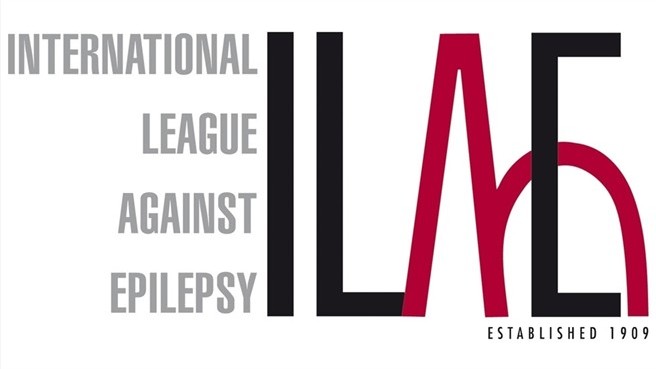Dysfluency. I typically reserve my more contemplative blog posts for our summer beach vacation, but there are some thoughts that I had during this Spring Break that I wanted to share. In brief, I read Life on Delay by John Hendrickson and started reading The Beginning of Infinity by David Deutsch. At first glance, these two books couldn’t be any more different – a story about bullying, depression, isolation, and other issues that people who stutter face on a daily basis, and a wide-ranging narrative about the cosmic power of the search for good, scientific explanations. Then something occurred to me: there are two ways to spell dysfluency/disfluency. Hendrickson spells dysfluency with an “I,” while the scientific literature often prefers the “Y”. And this ambivalence may actually tell us something about the nature of neurogenetics more broadly.
Tag Archives: autism
SCN2A – a neurodevelopmental disorder digitized through 10,860 phenotypic annotations
HPO. SCN2A-related disorders represent one of the most common causes of neurodevelopmental disorders and developmental and epileptic encephalopathies (DEE). However, while a genetic diagnosis is easily made through high-throughput genetic testing, SCN2A-related disorders have such a broad phenotypic range that understanding the full scale of the clinical features has been traditionally difficult. In our recent study, we used a harmonized framework for phenotypes based on the Human Phenotype Ontology (HPO) to systematically curate phenotypic annotations in all individuals reported in the literature and followed at our center, a total of 413 unrelated individuals. Mapping phenotypic data onto 10,860 terms with 562 unique concepts and applying some of the computational tools we have developed over the last three years, we were able to delineate the phenotypic range in unprecedented detail. SCN2A is now the first DEE with all available data systematically curated and harmonized in a computable format, allowing for entirely novel insights. Continue reading
Exploring the dark matter of the human genome – de novo mutations in regulatory elements
Unsolved cases. We are in an era of dramatic progress in understanding the genetic causes of neurologic disorders. In spite of this progress, many cases remain unsolved even after whole exome sequencing. One hypothesis for this missing heritability is that “non-coding” mutations outside the exome may explain at least some of these unsolved cases. A recent study looked at de novonon-coding variants in patients with neurodevelopmental disorders. The study sheds new light on this question and reminds us that, despite all the recent progress, there is much still to learn about vast portions of the genome. Continue reading
CHD2 myoclonic encephalopathy – delineating a novel disease
CHD2. In 2013, mutations in CHD2 were reported in various publications including two major studies on epileptic encephalopathies, reinforcing the notion that de novo mutations in this gene are a recurrent cause of epileptic encephalopathies. However, large-scale studies often cannot fully appreciate the complete phenotype of the patient behind the gene finding. Therefore, it is difficult to appreciate similarities between patients and assess whether phenotypes constitute a recognizable entity. In a recent publication in Neurology, the phenotype of CHD2 encephalopathy is explored in detail – it represents a distinct, recognizable disease entity. Continue reading
Sequencing for developmental disorders on a national level – the DDD(UK) study
DDD. It’s probably the most impressive of all exome sequencing studies of 2014 and I almost missed it. Late December last year, the Deciphering Developmental Disorders study was published in Nature, reporting the genetic findings in more than 1,000 patient-parent trios, which were collected in a systematic nation-wide approach in the United Kingdom and Ireland. The analysis of more than 1,600 de novo mutations in this cohort provides another fascinating view into the genetics of neurodevelopmental disorders, independently confirming the role of DNM1 and pointing out several genes that act through either activating or dominant-negative mutations. Let me guide you through a study that comes to the sobering conclusion that even entire nations are too small to understand the genetics of neurodevelopmental disease. Continue reading
TADA – a joint analysis of de novo and inherited risk factors in autism
Beyond de novo. One of the most robust ways to interpret exome data is the analysis of de novo mutations. However, in addition to the 1-2 de novo events that we can identify in every individual, there is a plethora of inherited variants that often look suspicious. Unfortunately, other than looking at monogenic recessive disorders, we are often incapable of understanding the importance of these inherited variants and tend to ignore them. A recent publication in Nature now overcomes this difficulty by applying a joint analysis of inherited and de novo variants in autism. Continue reading
The 1003 possible autism genes – a matter of constraint
Overview. There have been numerous publications on de novo mutations in autism and intellectual disability over the last three years. Many of these studies struggle to distinguish signal from noise, and the plethora of findings leaves the reader wondering which genes are bona fide autism genes and in which cases the evidence is limited. A recent paper in Nature Genetics uses a new metric to assess expected versus observed de novo mutations in more than published 1000 autism patient-parent trios – and the answers appear to be straightforward. Continue reading
The return of the h-current: HCN1 mutations in atypical Dravet Syndrome
Hyperpolarization. More than a quarter of a century ago, physiologists identified an electrical current in neurons and cardiac myocytes that behaved so strangely that it was called the “queer” or “funny” current: it paradoxically caused depolarization upon hyperpolarization. This current was finally named h-current and is mediated by HCN channels. The h-current has been associated with epilepsy through functional studies, but a genetic link has been elusive so far. In a recent publication in Nature Genetics, de novo mutations in HCN1 are identified in patients with early-onset epileptic encephalopathies resembling Dravet Syndrome. Continue reading
Papers of the week – DEPDC5, a “female protective model” and rescued KCNT1 mutations
In final week before our EuroEPINOMICS  bioinformatics workshop in Leuven people get a little busy and start reading up on all sorts of things. Accordingly, this week’s papers come from all areas of genetics and life science, including three studies in Annals of Neurology on epilepsy genetics.
bioinformatics workshop in Leuven people get a little busy and start reading up on all sorts of things. Accordingly, this week’s papers come from all areas of genetics and life science, including three studies in Annals of Neurology on epilepsy genetics.
Papers of the week – Encephalitis-antibodies, FAN1, Art and Parent-of-Origin Effects
Biggest surprise this week: Imprinted genes interact with non-imprinted genes frequently. But first sequencing reports, statistical frameworks for rare variants analyzes and an impressive translational result.
A novel encephalitis with seizures and the analysis of the effects of antibodies. In their study published in LANCET NEUROLOGY Petit-Pedrol and coworkers characterized serum and CSF samples for antigens in 140 patients with encephalitis, seizures or status epilepticus as well as antibodies to unknown neurophil antigens. High titres of serum and CSF GABAA receptor antibodies are reported to be associated with a severe form of encephalitis with seizures, refractory status epilepticus, or both, which could be exploited for immunotherapy with 15 patients.


